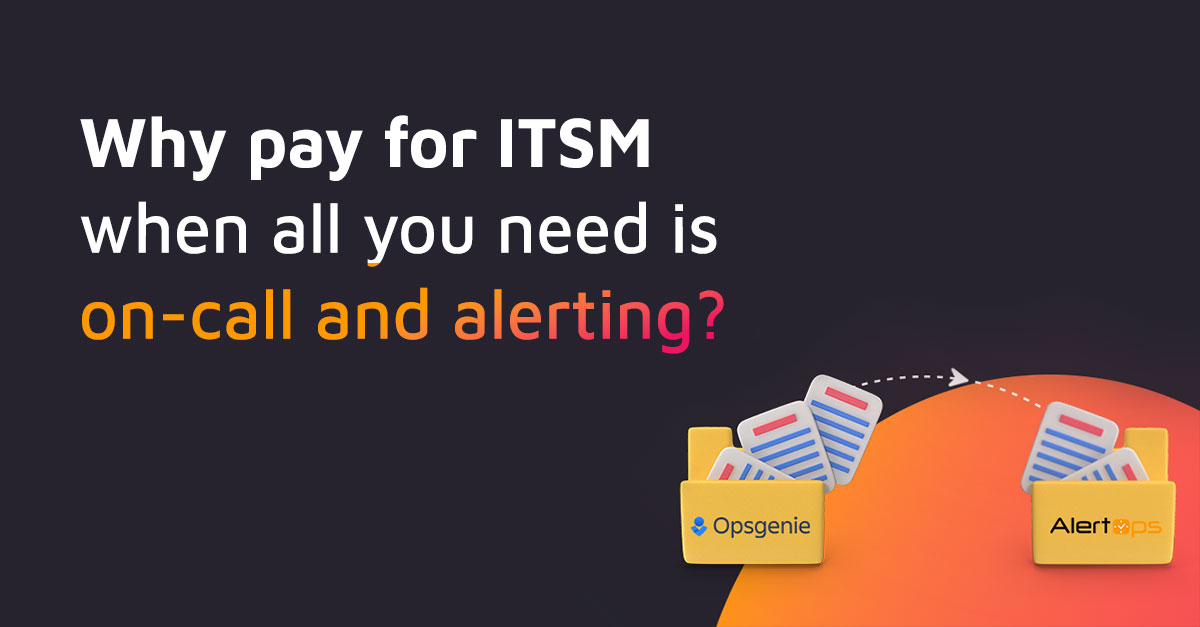The coronavirus (COVID-19) pandemic has transformed the global workforce — and your enterprise is no exception. Enterprises are increasingly allowing staff to work remotely during this difficult time. Yet, many enterprises are still learning how to use remote workforce technology to effectively engage workers in real-time.
AlertOps can connect your teams, regardless of location. It has several features to power your remote workforce.
1. On-Call Schedules
There may be times when you want to know who’s available but lack visibility into your remote workforce. In these instances, you may repeatedly email or call all of your teams to find out who’s available, which slows down your workforce.
AlertOps on-call schedules make it simple to see who’s available at any time. You can rotate schedules daily, weekly, or monthly, add or remove team members from your rotation, and change out personnel every day or every hour. Also, you can set up a fixed schedule, so employees know when they’re on-call, and alerts are only sent to on-call staff.
Along with on-call schedules, AlertOps provides the flexibility to build vacations, holidays, and personal time-off into schedules. You can create an unlimited number of schedule overrides, and our platform automatically selects the right schedule based on the time and date. AlertOps even offers an out-of-office mode, so when a team member steps out, a pre-assigned teammate can receive alerts until the primary team member returns.
2. Slack & Microsoft Teams Integrations
When you work remotely, you can’t just pop into a co-worker’s cubicle to ask a question. So, you need the next best thing — a communication platform that fosters real-time collaboration.
With AlertOps pre-built Slack and Microsoft Teams integrations, you can automatically distribute alerts based on team assignments, on-call schedules, and escalation policies. These integrations also allow your teams to open conversations in Slack and Microsoft Teams when they receive new alerts.
AlertOps provides three-way integrations with your monitoring stack, chat tools, and help desk as well. Team members can use our platform to send alert responses via Slack or Microsoft Teams to your ticketing system, assign owners to tickets, and close tickets — all within a single chat tool. Furthermore, your teams can use AlertOps to manage alerts via any application in your incident management system and automate communications with other systems.
3. Live Call Routing
Your office may be temporarily closed due to the coronavirus pandemic. But, your office lines must remain operational — or your teams risk missing out on notifications from customers and other stakeholders.
AlertOps Live Call Routing directs calls to the right team members, at the right time, every time. Your teams can use our platform to transfer an incoming call to the contact numbers for your on-call team. That way, AlertOps ensures every call gets answered — by a person picking up the phone or an answering machine.
Your teams can use AlertOps to reach a specific team member via touch-tone menu, too. If a team member is unavailable, AlertOps automatically escalates a call to the next-available team member. In addition, in situations where no team members are available, a caller can leave a voicemail, and our platform automatically creates an alert for the missed call.
4. Automatic Escalations and Workflows
You know your team is working to address an incident, but you want to know exactly who is contributing to your incident response efforts. With this information at your disposal, you can ensure your team gets the support it needs to resolve the incident.
AlertOps automatic escalations provide the right team members with incident visibility. You can use our platform to organize team members into incident response groups, create on-call schedules with one or more primary on-call team members, and implement redundancies with secondary on-call team members. You can also set up automatic retries and escalations, so team members are notified until an alert is assigned or closed.
Our automatic workflows simplify incident response as well. You can create custom AlertOps workflows that automate system integrations, call-backs to ticketing software, forward flows to open and close tickets, and other integrated operations. Moreover, you can establish workflows to notify team members based on incident severity.
5. Manual Paging
When an incident happens, you need to get the right team members together right away — because the sooner the right team members know about an incident, the sooner they can work together to address it.
AlertOps enables you to automatically send alerts to multiple team members or as needed via templates. Our pre-configured message templates allow you to fill in the blanks and page out for incidents. In doing so, our templates help you communicate better, resolve incidents faster, and create more granular incident reports.
Lastly, our platform offers Manual Paging, so you can open tickets on your own. You can share technical details with incident responders, send formatted notifications to stakeholders, and update your status page — all with just a few clicks. Plus, you can instantly set up a conference bridge, so team members can quickly get together to explore ways to resolve an incident.
Learn More About AlertOps for Remote Work
COVID-19 has changed the way your enterprise works. Now, your remote workers require technology that allows them to connect with one another — from all locations, at all times.
AlertOps fosters seamless communication among remote workers. Our platform ensures your remote workers can uncover incidents and engage with one another to resolve such issues. The result: your teams can remain productive, and your enterprise can limit the impact of downtime, outages, and similar problems.
To learn more about AlertOps for remote work, please contact us today at sales@alertops.com, or request a free demo.



